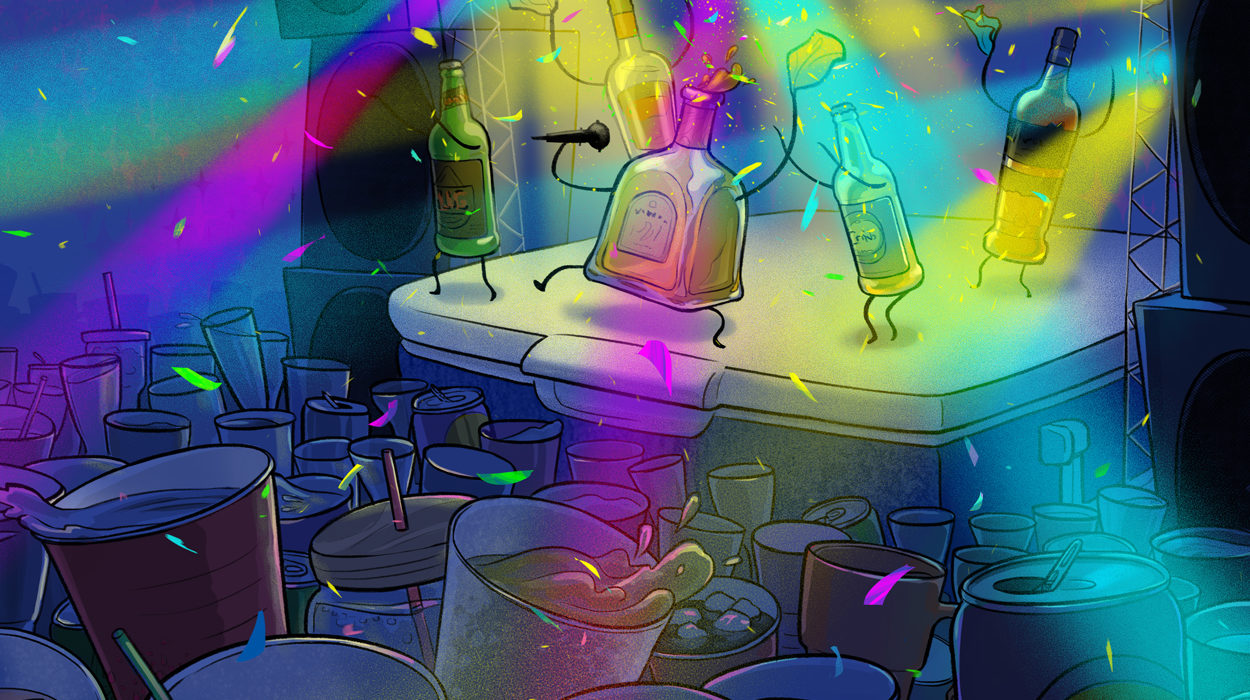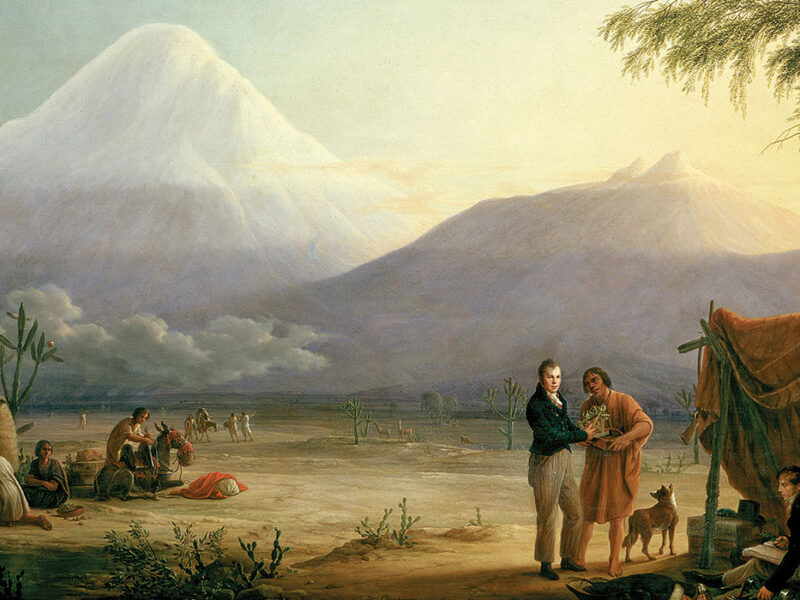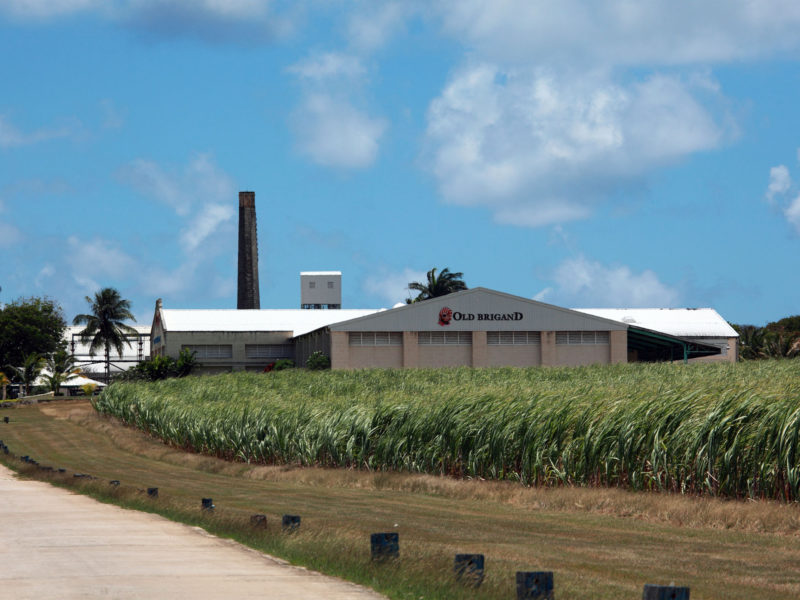There’s an adrenaline-spiking excitement that builds with the thunderous bass coming from the Savannah Stage on Carnival morning in Trinidad and Tobago. It’s only 9 a.m., but the relentless Caribbean sunshine is already beating down mercilessly on the sea of bejeweled partiers gyrating their way to the stage. Stimulation overload edges closer with every chip (something like a walking shuffle) toward the centerpiece of a grandstand once used to watch horse races. The first step on the stage seems to explode with an eruption of that built-up excitement. Confetti and glitter fly through the air. There are paparazzi. The sweaty crowd bounds to the soca music. The bacchanal has officially begun.
“Carnival in Trinidad and Tobago is an incredible party that we throw for ourselves with an open invitation for the rest of the world,” says John Georges, Master Distiller of Angostura, one of Trinidad and Tobago’s major rum producers (not to mention the maker of the world’s most widespread bitters). “Carnival also highlights Trinidad and Tobago’s creativity, energy and culture. Our carnival is different in that everyone can get involved, and its many contributors introduce new music, dance, and art to the festival every year.”
The national festival did not start with this inclusive spirit. When Roman Catholic French came to the Spanish-controlled island in the late 1700s, they brought with them their tradition of pre-Lent masquerade balls. The enslaved locals weren’t allowed to participate in the masquerades, and it wasn’t until slavery was abolished that the people of Trinidad began to “play mas” themselves, transforming it into the glorious global spectacle it is today. “It is a festival held close to all those who partake in it,” says Chad Lee Loy, bar manager at Island Beer in Port of Spain. “Decades of history—traditional, musical, visual, theatrical as well as it being a long party season and the parade of bands—it has a different meaning for everybody.”
Trinidad’s Carnival falls on the Monday and Tuesday before Ash Wednesday. “Carnival was your typical pre-Lenten festival and seen only as that,” says Georges. “But of course now we’re in a sort of a post-colonial era. The idea that Carnival is only about religious stuff—it’s now more cultural.” People from all over the world come and join a “band” (a group wearing similar costumes following a truck carrying live music) to play mas with whether or not they’re of West Indian ancestry.
It’s a good week to be in Trinidad, particularly in Port of Spain, where the celebration is the largest. “The run-up to the two days of street parades that is Carnival Monday and Tuesday, is like the rise to a crescendo that starts after Christmas,” says Georges. “Many elements, such as the steelband music, soca music, parties, shows, and costume making, help build up the excitement and anticipation until finally all is released and revealed when the costumed revelers burst onto the streets for the biggest, loudest party of the year.” A range of events take place leading up to Lent. Most famous is J’Ouvert (from the French for daybreak), which begins in the middle of the night before Carnival and rages until the sunrise. The dancing’s the same as you’ll find at Carnival—”wining,” grinding, and chipping down the street following a truck carrying a band or DJ—but with a totally different vibe and dress code. You’re out there to slather paint and mud on fellow partiers, so the best move is to wear something you wouldn’t mind throwing out when the party’s over. “My first J’Ouvert was phenomenal. Three in the morning surrounded by a huge crowd of people, covered in mud and paint, nobody stood out, everybody was one enjoying themselves. It started my addiction to J’Ouvert,” says Lee Loy. “After J’Ouvert, sun is up—going to the band, it was beautiful. It was two days of pure adrenaline and ecstasy.”
As with Mardi Gras, the pre-Lent partying is a way to binge on “bad behavior” before the religious forty-day suspension of vices. A common theme in the Carnival music and the costumes is alcohol. The most widespread accessory of the week is a plastic cup or mug to transport your Carnival beverage of choice. While you’re playing mas, you’re not going to be waiting for a mixologist to make you a Trinidad Sour. Instead, you head to the wheeling trolly bar of the group you’re with for something easy to throw together.
The most popular options are rum or Scotch with coconut water, soda, or cola. “Say Scotch and coconut water to a person in Trinidad and watch them smile,” says Daniyel Jones, a Trinidad native as well as Global Brand Ambassador for House of Angostura. “If they don’t smile, they’re not from Trinidad.” You’ll also find people drinking champagne, or high-proof puncheon rum with orange juice, cranberry, or ginger ale. “For a 150-proof spirit, it has a lot of character to it,” says Jones. Tourists seeking out cultural experiences tend to stick to local beer (Carib) and local rum (Angostura). Rum and coconut water seems to be the safest bet for a sustainable Carnival drinking experience. The coconut water is refreshing and hydrating, a complement to the alcohol, hot climate, and aggressive exercise. It’s easy to clock well more than ten miles on your pedometer on a Carnival day as you dance your way through town on foot for twelve hours.
Carnival is fiercely liberating. It’s a fraction of the year where near-nudity is encouraged, street drinking is allowed, and dancing is mandatory. “It encourages everyone to be spontaneous and creative and be our true selves—or whoever we want to be—for a couple of days, as we celebrate and enjoy life,” says Georges. Troubles are forgotten and madness ensues. When it’s over, a depression falls over those who took part in the revelry. It’s such a cultural phenomenon that there’s a name for the specific sadness: tabanca.
Curing tabanca calls for a “lime”—not a citrus fruit but a laid-back gathering (preferably on the water coupled with a cooler of beers or more rum) that shares the same name. You can go “down d islands” to villas and beaches accessible only by boat, or fly over to Tobago for the postcard-worthy beaches for which the nation is known. “Trinidad and Tobago—our two-island state really has it all. Both are beautiful islands with a unique charm,” says Georges. “Trinidad has wonderful scenery, vibrant nightlife, and industry, while Tobago is known for its easily-accessible picturesque beaches that vacationers love. We have a very diverse population and being hospitable is rooted in our bones. We welcome visitors with the aim of making good ‘Trinbagonians’ of them before they leave our islands.” After a week of rum and dancing until your feet go numb, you may not leave a real Trinbagonian, but you will be changed forever.
Trini Ting
Makes 1 drink
Local ingredients at the ready, sturdy glass steady in hand, it’s time to lime!
1 1/2 ounces Angostura 1919 rum
3 ounces chilled coconut water
2 dashes Angostura Bitters
Pour all ingredients into vessel of choice. Sip repeatedly.
Recipe by Daniyel Jones




